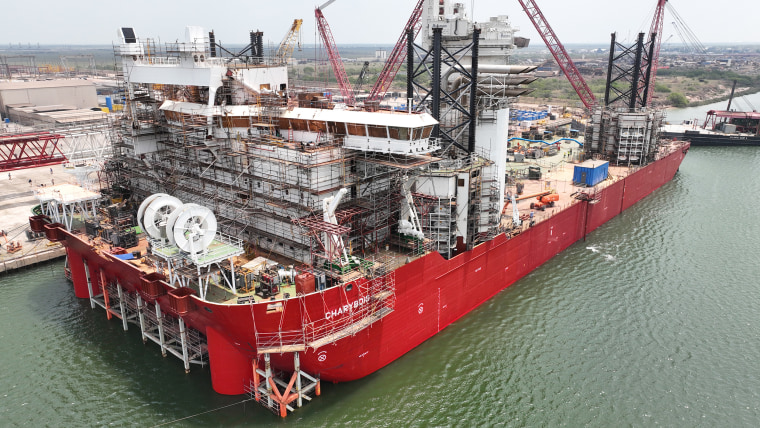In the world of renewable energy, wind power stands out as a key player in the global shift towards cleaner sources of electricity. The industry has seen exponential growth over the years, with many countries making significant investments in wind energy infrastructure to reduce greenhouse gas emissions and combat climate change. However, despite the promising outlook for wind energy, there are challenges that need to be addressed to fully harness its potential.
One of the major obstacles facing the wind energy sector in the United States is the lagging progress in achieving President Joe Biden’s ambitious goal of generating 30 gigawatts of offshore wind energy by 2030. While offshore wind has the potential to contribute significantly to the country’s renewable energy mix, there are several key factors that have hindered its development.
One of the primary obstacles to the growth of offshore wind energy in the U.S. is the lengthy and complex permitting process. Developing offshore wind projects involves navigating a maze of federal, state, and local regulations, as well as engaging with various stakeholders, including environmental groups, fishing communities, and indigenous tribes. The multi-layered permitting process can be time-consuming and costly, leading to delays in project execution and implementation.
In addition to regulatory challenges, the lack of sufficient grid infrastructure presents another barrier to the growth of offshore wind energy. Connecting offshore wind farms to the onshore grid requires significant investment in transmission lines and infrastructure, which can be a significant hurdle for developers. Without a robust transmission network to transport electricity from offshore wind farms to population centers, the full potential of offshore wind energy cannot be realized.
Furthermore, offshore wind faces competition from other energy sources, such as natural gas and solar power, which have dominated the renewable energy landscape in recent years. These competing sources often have established infrastructure and lower costs, making it challenging for offshore wind to compete on a level playing field. As a result, offshore wind projects may struggle to secure financing and attract investors, further impeding their development.
Despite these challenges, there is optimism that the Biden administration’s commitment to renewable energy and climate action will help drive progress in the offshore wind sector. The administration has proposed significant investments in clean energy infrastructure, including offshore wind, as part of its Build Back Better agenda. These investments could help streamline the permitting process, expand transmission capacity, and provide financial incentives to developers, making offshore wind more competitive in the energy market.
In conclusion, while there are challenges facing the growth of offshore wind energy in the U.S., there is also tremendous opportunity for expansion and innovation in this sector. By addressing regulatory barriers, investing in grid infrastructure, and incentivizing development, the Biden administration can help unlock the full potential of offshore wind energy and accelerate the transition to a cleaner, more sustainable energy future.





























